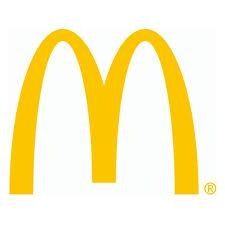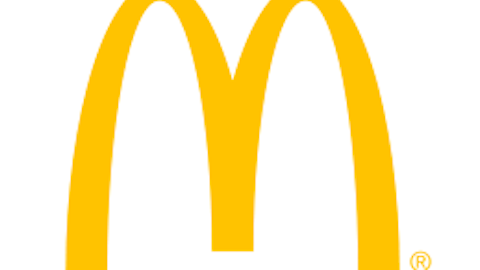
Tangible Book Value Per Share
One of my all-time favorites, tangible book value per share, or TBVPS, is a measurement of the portion of tangible assets (all assets, with the exception of goodwill and items classified as “intangible” on a company’s balance sheet) attributable to each share of the company’s common stock.
This means that it is helpful in establishing a valuation of a company, and whether or not it may be over or undervalued. This is important because lots of company’s balance sheets can reflect asset valuations that are inflated by intangibles; yet, if a company were to go bankrupt, the tangible value of assets a company has would be what is left over after bankruptcy.
So, if you own shares of a company that has incredibly high levels of assets (that are all intangible) and it goes bankrupt, you may be in trouble. Analyzing this ratio is one way to avoid this. A simple way to put this would be that tangible book value answers the question, “as a shareholder, what would I receive if the company had to liquidate all of its assets?” By measuring this value per share, we create a ratio that measures valuation.
A TBVPS larger than the current price of the stock means that the stock could be potentially overvalued, whereas a TBVPS smaller than the stock could mean that the stock is potentially undervalued. For those who are interested, TBVPS is equal to: (Tangible Book Value – Book Value of Preferred Stock) / Common Shares Outstanding. Now, let’s look at each company’s TBVPS in relation to their stock price.
| TBVPS | Price ($) | TBVPS / Price (Valuation) | |
|---|---|---|---|
| McDonald’s | 12.41 | 101.12 | <1 |
| Wendy’s | -0.49 | 6.05 | <1 |
| Burger King | -6.25 | 18.79 | <1 |
So all three companies, according to this measurement, are potentially undervalued, according to their TBVPS. Let’s move on to the next one.
EV / EBITDA
This ratio tells the relationship between a company’s enterprise value and its EBITDA, or its earnings before interest, taxes, depreciation, and amortization, a common value used to measure the earnings of a company. The enterprise value is a less-often used alternative to traditional measurements like market capitalization. EV is often considered to be the theoretical purchase price of a company should a purchaser takeover the company and thus take on the company’s debt, while keeping the cash and gaining rights to the future earnings of the company.
The ratio between these two numbers tells us the valuation of a company per each dollar of EBITDA. This is often used by analysts to quickly see a company’s valuation multiples. A higher ratio tends to mean the company is potentially overvalued, while a lower ratio tends to mean an undervalued company. Let’s look at our burger makers:
As the chart illustrates, McDonald’s Corporation (NYSE:MCD) has the lowest EV/EBITDA ratio, with Wendy’s in the middle and Burger King Worldwide Inc (NYSE:BKW) coming in highest, meaning that the most undervalued company of the burger bunch is McDonald’s Corporation (NYSE:MCD), with the King as the most overvalued, and The Wendy’s Co (NASDAQ:WEN) somewhere in between.
PEG Ratio
The PEG ratio (simply the Price/Earnings to Growth Ratio) helps to show the relationship between the price of a stock, the earnings per share, and the growth rate of the company. This metric is particularly useful when comparing companies side by side with different PE ratios and different growth rates. When analyzing the ratio, analysts typically classify companies with a PEG lower than 1 as associated with undervaluation, while companies above 1 tend to be overvalued. Now, let’s take a look at the graph for the burger companies:
One of the reasons that I like the PEG ratio so much is because, just as in this graph, it shows us another angle that the previous two metrics do not show. This chart illustrates a recent skyrocketing of McDonald’s Corporation (NYSE:MCD) PEG ratio (mathematically, this must be due to either lower growth rates or a higher PE ratio – I’ll spare you the time and spoil it for you; their PE ratio TTM has remained relatively flat at about 18-19 the past few months, leaving only decreases in growth as the culprit.) This reveals that decreases in growth at McDonald’s Corporation (NYSE:MCD) could lead to the company being potentially either less undervalued (than the other ratios may suggest) or potentially overvalued. As for The Wendy’s Co (NASDAQ:WEN), their 0.6 PEG shows potential undervaluation, and Burger King Worldwide Inc (NYSE:BKW)’s (hidden by the graph) value of 1.7 shows possible slight overvaluation.
The Foolish bottom line
The numbers throughout the burger market have fluctuated recently, with strong US numbers but weakening European and Asian numbers revealed in the latest reports for these fast food restaurants. Depending on each company’s domestic vs. international stake, the results may vary. However, hopefully these few metrics helped you learn something about all three burger giants, as well as three methods to value companies in an industry in the future.
The article Whose Burger is Best? Valuing the Biggest Burger Companies originally appeared on Fool.com and is written by Michael Nolan.
Copyright © 1995 – 2013 The Motley Fool, LLC. All rights reserved. The Motley Fool has a disclosure policy.








